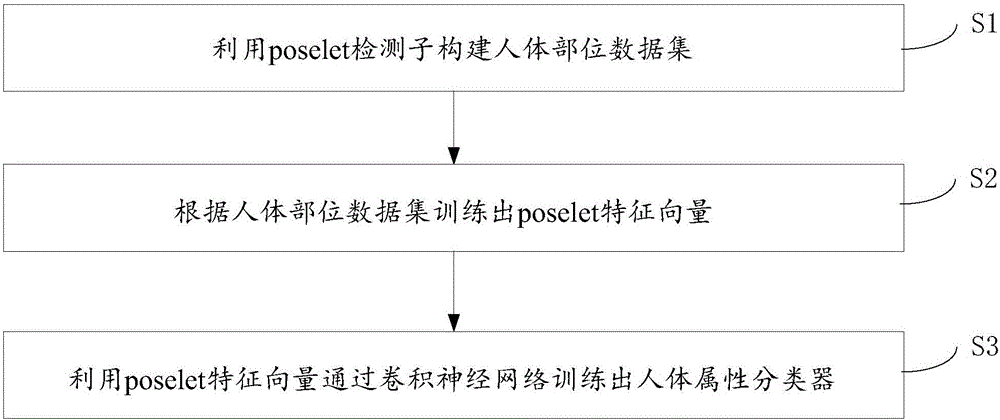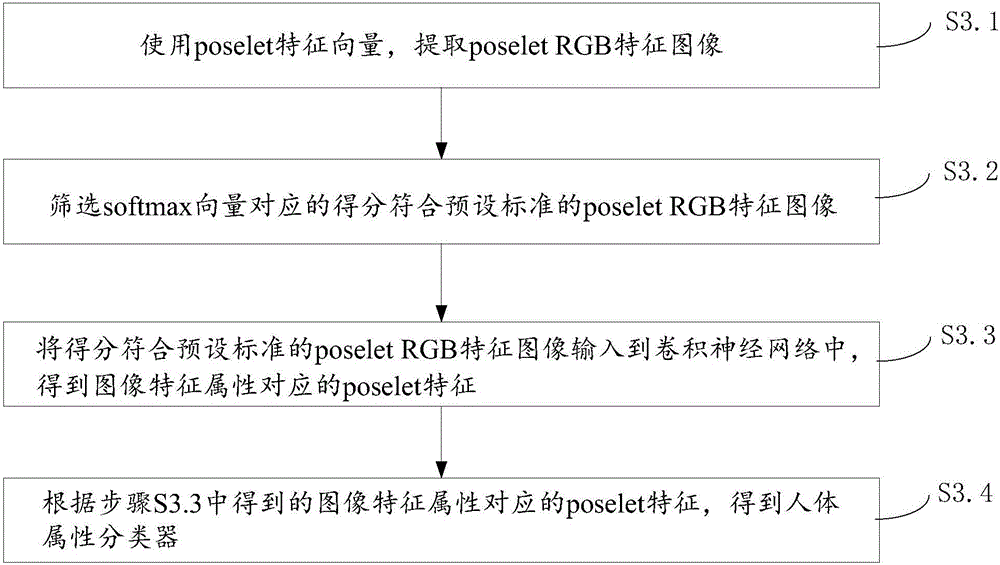Human body attribute identification method based on deep learning
A technology of attribute recognition and deep learning, applied in the field of human attribute recognition based on deep learning, to achieve the effect of improving accuracy, reducing redundant problems, and avoiding waste of resources
- Summary
- Abstract
- Description
- Claims
- Application Information
AI Technical Summary
Problems solved by technology
Method used
Image
Examples
Embodiment 1
[0061] A kind of human body attribute identification method based on deep learning that the present invention proposes, comprises the following steps:
[0062] (1) Randomly select 6W images from the publicly available labeled datasets for human detection and attribute recognition, of which 1W images are from Flickr and 5W images are from Taobao;
[0063] (2) Use the poselet detector trained by Bourdev et al. to detect the bounding box data of the main character and the poselet contained in the bounding box data on 6W training sets;
[0064] (3) Input the bounding box data into the RPN for processing to obtain candidate regions;
[0065] (4) Input the candidate area into Fast R-CNN for processing to obtain the RoI feature vector;
[0066] (5) Input the RoI feature vector into the fully connected layer, output the feature vector of poselet, the feature vector of poselet includes softmax vector and bbox regressor vector;
[0067] (6) Use the poselet feature vector to extract th...
Embodiment 2
[0072] A kind of human body attribute identification method based on deep learning that the present invention proposes, comprises the following steps:
[0073] (1) Randomly select 6W images from the publicly available labeled datasets for human detection and attribute recognition, of which 1W images are from Flickr and 5W images are from Taobao;
[0074] (2) Use the poselet detector trained by Bourdev et al. to detect the bounding box data of the main character and the poselet contained in the bounding box data on 6W training sets;
[0075] (3) Input the bounding box data into the RPN for processing to obtain candidate regions;
[0076] (4) Input the candidate area into Fast R-CNN for processing to obtain the RoI feature vector;
[0077] (5) Input the RoI feature vector into the fully connected layer, output the feature vector of poselet, the feature vector of poselet includes softmax vector and bbox regressor vector;
[0078] (6) Use the poselet feature vector to extract th...
Embodiment 3
[0083] A kind of human body attribute identification method based on deep learning that the present invention proposes, comprises the following steps:
[0084] (1) Randomly select 6W images from the publicly available labeled datasets for human body detection and attribute recognition, of which 1W images are from Flickr and 5W images are from Taobao;
[0085] (2) Use the poselet detector trained by Bourdev et al. to detect the bounding box data of the main character and the poselet contained in the bounding box data on 6W training sets;
[0086] (3) Input the bounding box data into the RPN for processing to obtain candidate regions;
[0087] (4) Input the candidate area into Fast R-CNN for processing to obtain the RoI feature vector;
[0088] (5) Input the RoI feature vector into the fully connected layer, output the feature vector of poselet, the feature vector of poselet includes softmax vector and bbox regressor vector;
[0089] (6) Use the poselet feature vector to extra...
PUM
 Login to View More
Login to View More Abstract
Description
Claims
Application Information
 Login to View More
Login to View More - R&D Engineer
- R&D Manager
- IP Professional
- Industry Leading Data Capabilities
- Powerful AI technology
- Patent DNA Extraction
Browse by: Latest US Patents, China's latest patents, Technical Efficacy Thesaurus, Application Domain, Technology Topic, Popular Technical Reports.
© 2024 PatSnap. All rights reserved.Legal|Privacy policy|Modern Slavery Act Transparency Statement|Sitemap|About US| Contact US: help@patsnap.com










